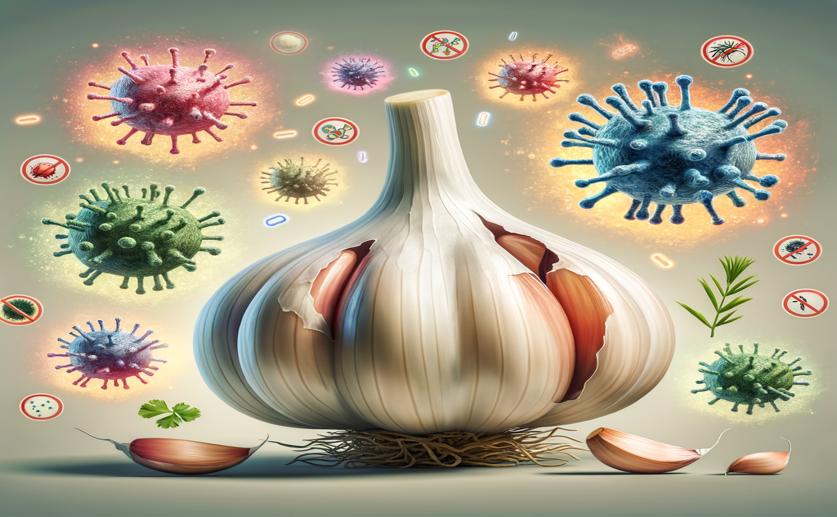
How Garlic Compound Fights Harmful Bacteria
Jim Crocker
14th June, 2024

Image Source: Natural Science News, 2024
Key Findings
- A study by Dr. Harisingh Gour Vishwavidyalaya found that diallyl sulfide (DAS) from garlic essential oil effectively inhibits the growth of Bacillus cereus, a common foodborne pathogen
- DAS works by causing the leakage of intracellular proteins and deforming cell membranes, which reduces the likelihood of resistance development
- This research supports the potential of garlic-derived compounds as new antibacterial agents to combat drug-resistant bacteria
References
Main Study
1) Mechanism of antibacterial activity of diallyl sulfide against Bacillus cereus.
Published 13th June, 2024
https://doi.org/10.1016/j.jaim.2024.100951
Related Studies
2) Traditional uses, phytochemistry, pharmacology and toxicology of garlic (Allium sativum), a storehouse of diverse phytochemicals: A review of research from the last decade focusing on health and nutritional implications.
3) Antibacterial Properties of Organosulfur Compounds of Garlic (Allium sativum).
4) The Chemical Compositions of the Volatile Oils of Garlic (Allium sativum) and Wild Garlic (Allium vineale).



 11th June, 2024 | Jim Crocker
11th June, 2024 | Jim Crocker